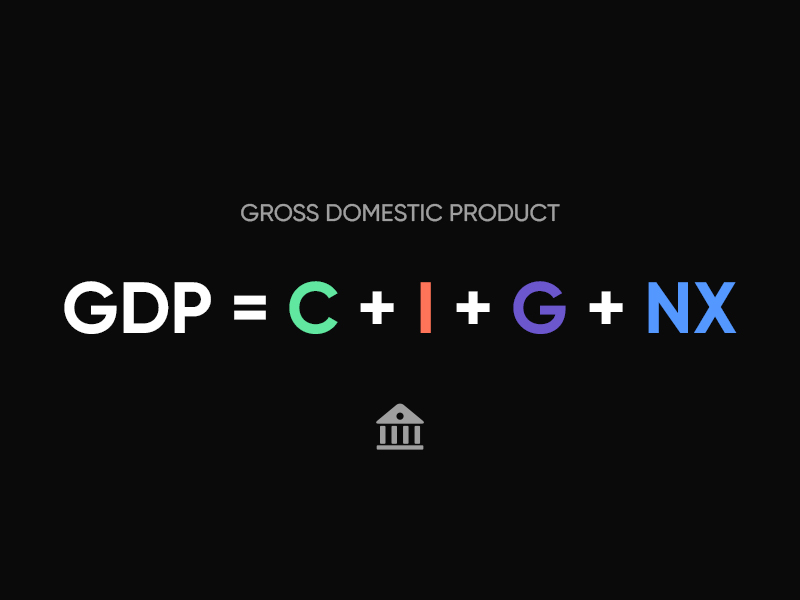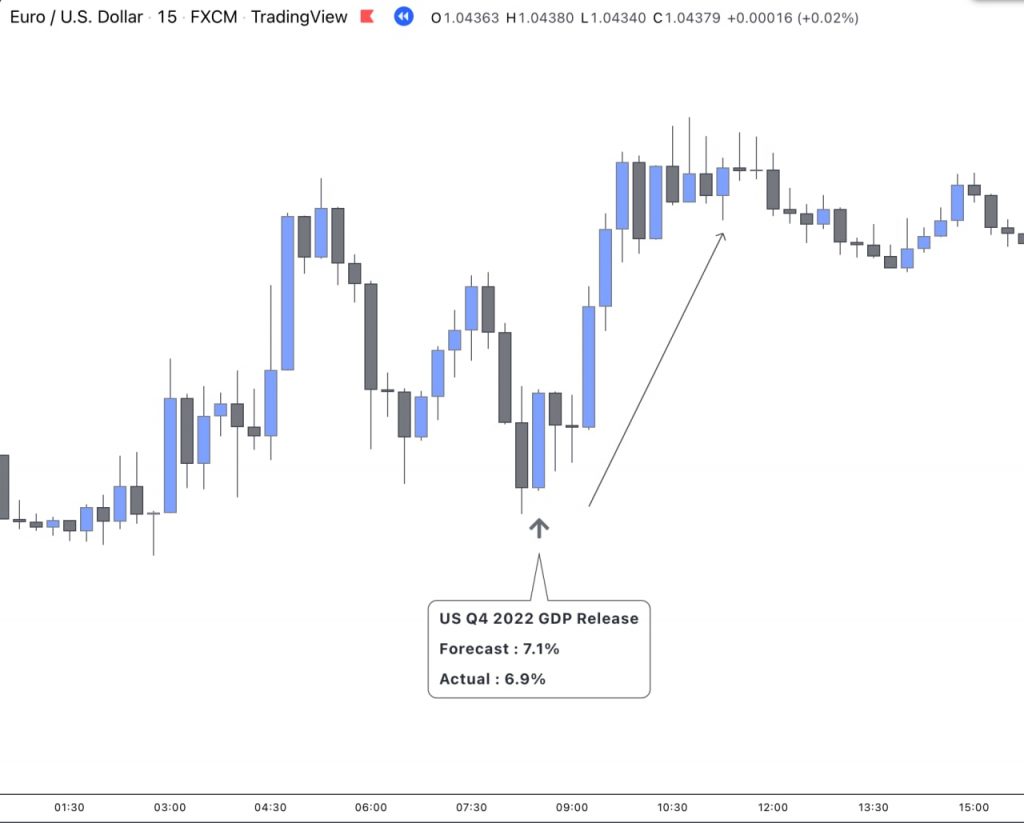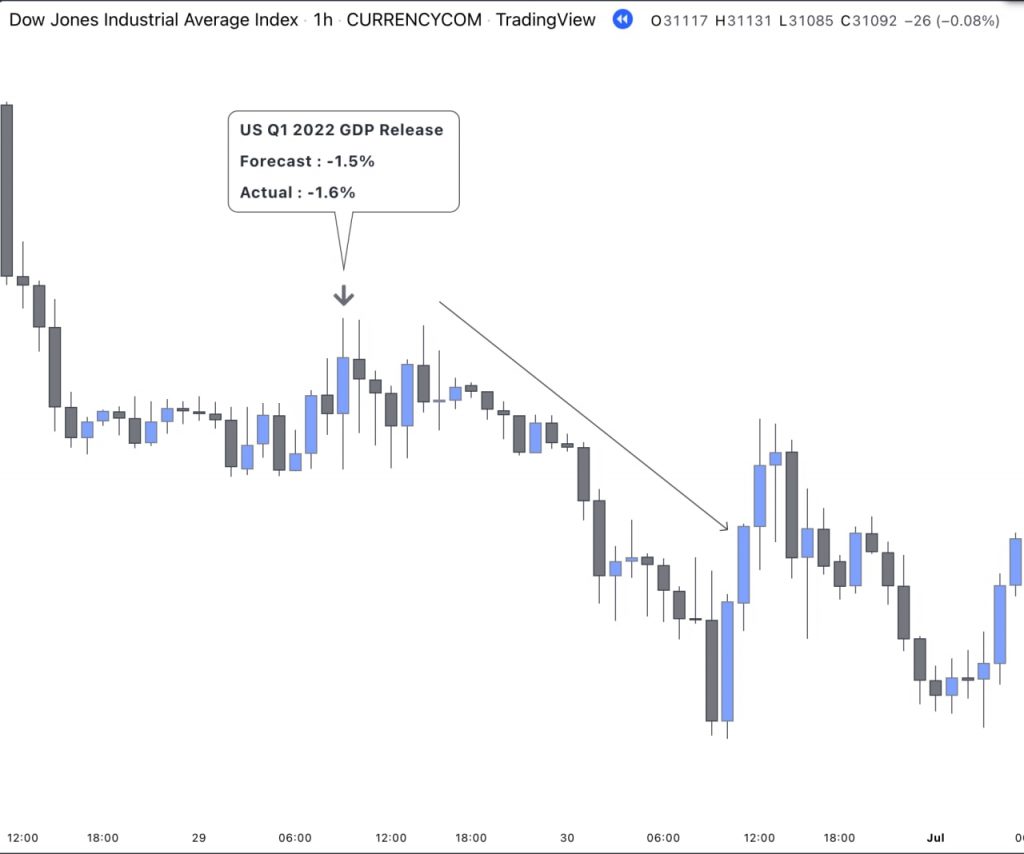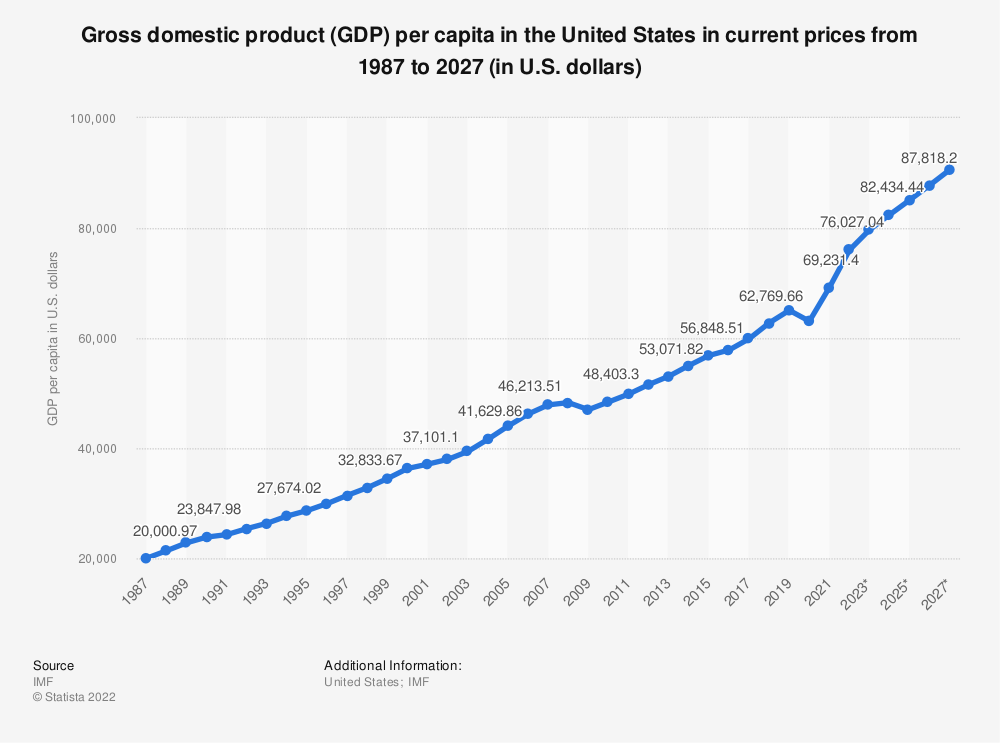GDP is an index whose rate causes a lot of fluctuations in the forex, stocks, and crypto markets. It is critical for every trader to know its importance, its effects on different markets.
In this article, we will teach you all the information you will need about this index
What is GDP?
GDP stands for gross domestic product. GDP shows the monetary value of all goods and services produced and supplied in a given period of time (usually one year) in a country.
GDP is the most common measure to evaluate the economic activities of a country, that’s why it usually causes strong movements in all markets when it is released to the public. A trader should pay attention to GDP in order to understand the market direction on a macro scale.
History of GDP
The basic concept of GDP was first used in the late 18th century. Its modern concept was created by the American economist, Simon Kuznets, in 1934 and was chosen as the main criterion for examining the economies of countries at the Bretton-Woods Conference in 1944.

How GDP is calculated
The most widely used method to obtain GDP is the method of calculation by expenditure. The United States also uses the same method to calculate GDP.
The amount of expenditure is the total amount received by producers of final goods and services, and the formula for calculating GDP in this way is as follows:

C=Consumption
The expenses that households have spent on purchasing their consumer goods and services. I=Investment
G=Government spending
Any purchase of goods and services made by the government
The expenses spent on buying new capital goods such as tools, machinery, buildings, etc
NX=Net exports
“Net exports” is the value of exports – value of imports
Example of GDP calculation
| Year | Consumption | Investments | Government Spendings | Net Exports | GDP |
| 1 | $500 | $1100 | $250 | $600 | $2450 |
| 2 | $700 | $1100 | $500 | $350 | $2650 |
| 3 | $900 | $1100 | $650 | -$450 | $2200 |
Shortcomings of GDP
There are activities in the economy that are not included in the calculation of GDP.
In the calculation of GDP in general, exchanges are tracked that are caused by production or have been reported.
The following items are not included in GDP calculation:
- Work for which no salary is defined, such as voluntary work, helping work
- Goods that are not produced for sale in the market.
- Exchange of goods and services without the exchange of money (clearance)
- Black or underground market
- Illegal activities
- Transfer payments
- Second-hand goods. For these goods, the GDP amount has been calculated for them once at the time of production
- Intermediate goods and services that are used to produce final goods and services.
- Capital assets. For example, when a household buys bonds and stocks, it is like making a down payment on a loan, rather than buying a good or service. Therefore, this item is not included in the calculation of GDP.
Difference between GNP and GDP
GNP stands for “Gross National Product”. This means that in calculating this index, the nationality of the producer is taken into account, and goods and services produced by the citizens of that country are examined, regardless of where these goods were produced.
For example, the production of an American company in Canada is considered part of the gross national product of the United States (GNP) and also part of the gross domestic product (GDP) of Canada.
Difference between GNI and GDP
GNI stands for “Gross National Income”. This index shows the total income earned in a country by citizens and businesses, regardless of whether they are located inside the country or outside it.
GNI is obtained from the sum of gross domestic product and income from foreign sources. For example, the gross national income of China is the sum of the gross national product and the income earned by the Chinese and Chinese businesses from outside of China. The formula for calculating Gross National Income is as follows :
GNI=GDP+(EXFS-IMFS)
where EXFS Indicates the flow of income from abroad to the country and IMFS
indicates the flow of income from inside the country to the outside of the country:
The effect of GDP on different markets
In general, the increase in the US GDP rate is good news for the dollar and the US, and it is a sign of the general health of the economy and the good performance of the economy in that period of time.
In the following sections, we will talk about the impact of the GDP rate on the forex, crypto, and stock markets.
The effect of GDP on Forex
For every forex trader, economic data should be extremely important as they have a significant impact on the market in the form of trend direction and volatility.
If you are new to Forex, you can read our Beginner’s Guide to Forex Trading.
When a vital report like GDP is released, the market tends to move significantly and these fluctuations increase based on the difference between the actual results released and the predicted results.
Therefore, it should not be expected that the market will make strong movements every time the GDP rate is published because it depends a lot on the time of publication, the willingness of the market maker, and the difference between the published rate and the predicted rate.
Pro Tip: One way to understand how the market reacts to GDP release is to write down every trade you do. This will help you to analyze the effect of news on your trades. You can use trading journal apps such as UltraTrader to journal your trades.
In general, an increase in the GDP rate grows the dollar’s strength while a decrease in the GDP rate causes a decay in the dollar’s strength compared to other currencies.
For example, if your currency pair is EUR/USD and the real published GDP rate is higher than the predicted number, we should expect an increase in the strength of the dollar and, as a result, the fall of EUR/USD when the news is published.

Note that there is no compulsion to this move and this example is just a hypothesis.
Many Forex market traders (especially scalpers) prefer not to trade when this news is published and observe the market instead.
The effect of GDP on stocks
As mentioned above, the increase in the GDP rate is good news for the dollar and is a sign of a healthy economy
Therefore, an increase in the GDP rate has a positive effect on the stock market, and a decrease in the GDP rate has a negative effect on the stock market.
It is obvious that the GDP rate of any country has an effect on the stock market of that country, and logically, the increase or decrease in the GDP rate of America has no effect on the stock market of other countries, for example, India.

The effect of GDP on Crypto
In general, the impact of the GDP rate on the crypto market depends a lot on the economic conditions in that time period.
According to the graphical observations, when the economic conditions are favorable, the crypto market usually shows little reaction to the GDP rate and might make short-term fluctuations.
But when the economic conditions of the world are like the current conditions in 2022 and there are signs of the beginning of a global recession, the movement path of the crypto market will become highly dependent on the GDP rate.
2022 Top countries by GDP
- United States: $20.89 trillion
- China: $14.72 trillion
- Japan: $5.06 trillion
- Germany: $3.85 trillion
- United Kingdom: $2.67 trillion
- India: $2.66 trillion
- France: $2.63 trillion
- Italy: $1.89 trillion
- Canada: $1.64 trillion
- South Korea: $1.63 trillion
- Russia: $1.48 trillion
- Brazil: $1.44 trillion
- Australia: $1.32 trillion
- Spain: $1.28 trillion
- Indonesia: $1.05 trillion
GDP Per Capita
The image below shows the US GDP per capita in dollars in 1987-2027.
The GDP index does not give us all the information we need. GDP is not a comprehensive index to determine the standard of living and level of welfare of a country. Although the change in the output of goods and services per person, which is GDP per capita, can provide feedback on the condition of an ordinary citizen, but it may ignore important matters involved in well-being.
For example, it is likely that the increase in domestic production of a country will reduce leisure time or end up in irreparable depletion of natural resources. It is possible that the quality of life depends on the distribution of gross domestic income among citizens. To take these factors into account, the United Nations has established the Human Development Index, which ranks countries not only by GDP per capita, but also by other factors, such as life expectancy, literacy levels, and school enrollment.







